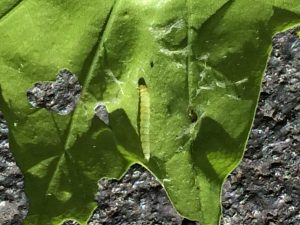
Oak leaftier rolls the leaf and secures it around itself with silk. Photo by Paul Veirauch.
Localized oak defoliation near Pembine was the work of a combination of caterpillars. Oak leaftier, oak leafroller, and eastern oak looper were all found to be defoliating oak. Oak leaftier and oak leafroller can cause similar symptoms since both caterpillars purposefully roll the leaf around themselves. This trait makes it difficult to spray for them since the chemicals can’t directly reach them. When defoliation is moderate, no control is necessary.
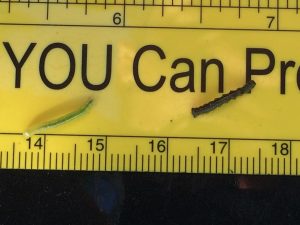
Oak leaftier and eastern oak looper on a ruler showing their size. Photo by Paul Veirauch.
Additional information on these insects is available at these links:
http://www.forestpests.org/acrobat/oakleaf.pdf
http://www.sicktree.com/idotis/insects/lndloop.html
Written by: Linda Williams, forest health specialist, Woodruff, (Linda.Williams@wisconsin.gov), 715-356-5211 x232.

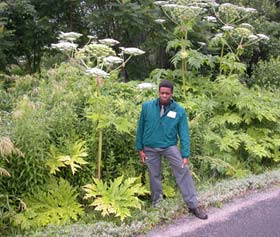
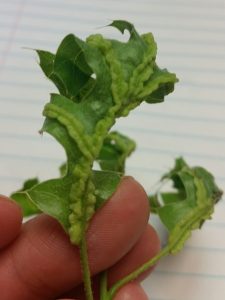
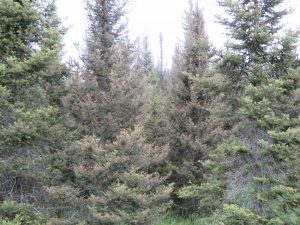
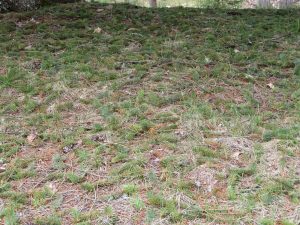
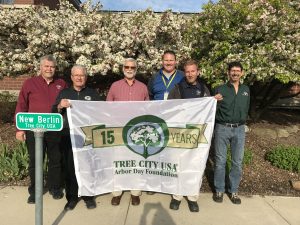 Breathe in… breathe out. The clear air that fills your lungs has been purified by trees. Clean air is one of the many ecological, economic and social benefits trees provide us. Trees also reduce crime rate, increase property values, reduce heating and cooling costs, increase tests scores, beautify communities, and provide lumber by-products. In late April, people around the world, both old and young, took time to celebrate these and other benefits by participating in Arbor Day celebrations.
Breathe in… breathe out. The clear air that fills your lungs has been purified by trees. Clean air is one of the many ecological, economic and social benefits trees provide us. Trees also reduce crime rate, increase property values, reduce heating and cooling costs, increase tests scores, beautify communities, and provide lumber by-products. In late April, people around the world, both old and young, took time to celebrate these and other benefits by participating in Arbor Day celebrations. Green Tier, a voluntary program administered by the DNR, works with entities conducting their business beyond compliance requirements and looking for ways to improve. Currently there are 82 participants with 248 facilities in the program along with six Green Tier Charters, including the
Green Tier, a voluntary program administered by the DNR, works with entities conducting their business beyond compliance requirements and looking for ways to improve. Currently there are 82 participants with 248 facilities in the program along with six Green Tier Charters, including the 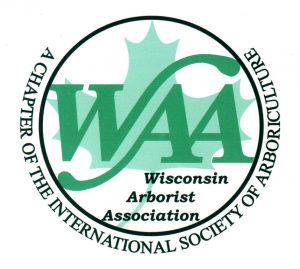 The
The